Minds On
Today’s vocabulary
Press the following tabs to access today’s vocabulary.
The instrument of dance. The term body may also describe the body’s position or shape (e.g., curved, straight, big, or small); also, how the body is moving (e.g., using locomotor or non-locomotor movements).
The space in which the body moves; includes the area around the body and the larger dance space.
A movement that involves travelling from one place to another across a space (e.g., walking, galloping, rolling, etc.).
A non-travelling movement where the body stays in one place; also called axial movement (e.g., moving the arms and/or twisting the body while staying in one spot, rise and sink, shake, push and pull, swing and sway).
The route or movement taken from point A to point B; or a pattern or design created on the floor or in the air by movements of the body (e.g., the arm moving in a circular motion creates a circular air pathway; galloping across the general space in a zigzag motion creates a ground pathway). The following are some examples.
- air pathway
- ground pathways
Levels are how far away the dancer's movements are from the floor, usually measured as high, medium, and low.
Directions are used to describe the position of the body or how it moves (e.g., forwards, backward, sideways, or diagonal).
Let’s get started!
Let’s explore a video about the southern right whale.
How does the whale move? How does it show the elements of body and space?

Two teachers are talking. The first teacher says, “The element of Body includes the shape the body is making. It is also how the body is moving, for example, locomotor or non-locomotor movements.” The second teacher responds, “The element of Space is where the body moves. This includes levels, pathways, and direction.”
Access this video entitled “Creature Mania” to learn more about how the southern right whale moves.
Action
Get ready, get set…
Task 1: Exploring body and space
Let’s revisit the video of the southern right whale to identify its movements!
What different movements did you notice in the video? How do the movements connect to the elements of body and space?
Body
Press the following tabs to access how the element of body is shown in the movements of the southern right whale.
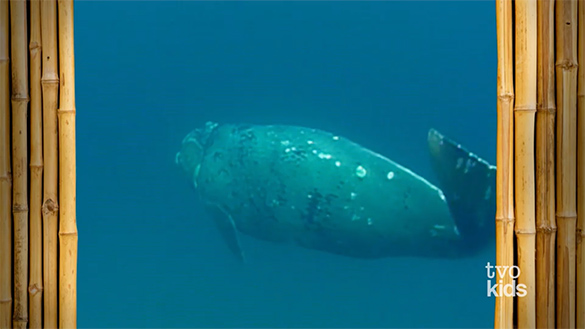
The whale is swimming through the water.
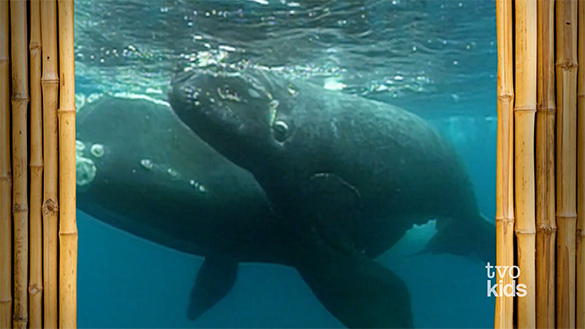
The whale comes up to the surface of the water.
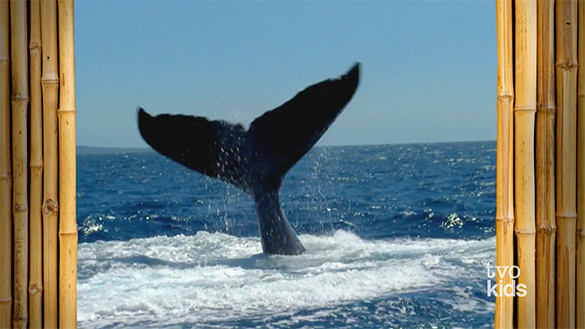
The whale slaps its tail in the water.
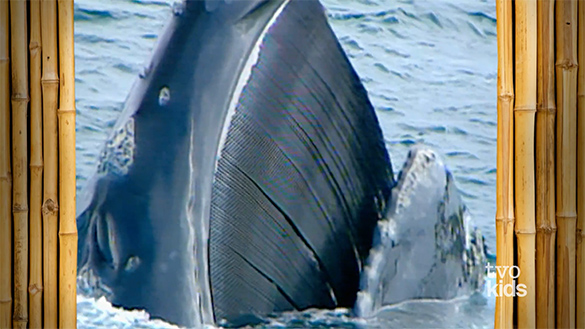
The whale opens its mouth.
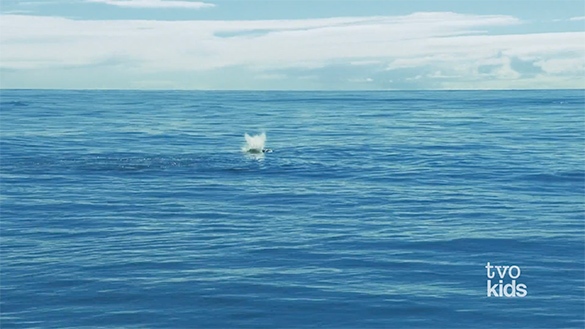
The whale blows air out its blowhole.
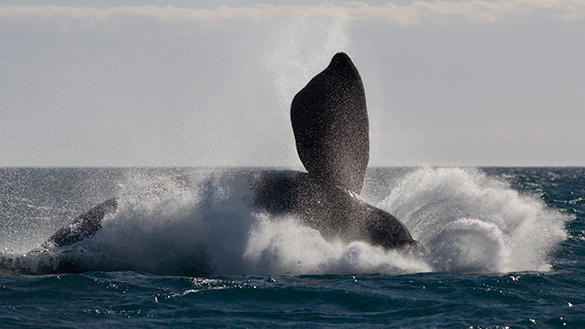
The whale is a large mammal and makes a big shape.
Space
Press the following tabs to access how the element of space is shown in the movements of the southern right whale.
The whale explores low, medium, and high levels with its body. Underwater, the whale moves at a low level. As it rises to the surface, it is at a medium level and when it rises above the water it is at a high level.
The whale moves in curvy and straight pathways.

The whale moves in forward direction.
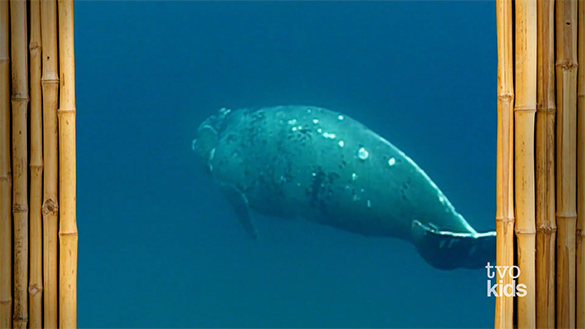
The whale moves in an upward direction.
Task 2: Move like a whale!
Let’s use the movements of the southern right whale to create a short movement sequence.

Check the My Whale Movements – Example chart.
|
Body |
Space |
|---|---|
|
Locomotor movement: Non-locomotor movement: Shape my body is making (big, small, curved, or straight): big, curved |
Level: Pathway: Direction I am travelling (forward, backward, sideways, or diagonally): forward |
|
Describe or draw your movements here: Movement #1 |
|

Description
A child is running. Below the child there is text that says, "Start at a medium level." Beside the child there is an arrow pointing in the direction they are running. The text below says, "Travel forwards." To the right of the arrow is a curvy line. The text below says, "Use a curvy pathway." |
|
|
Movement #2 
Description
A sequence of movements done by one person. First, the person has their hands on their head. Then, they move their hands away from their head but keep their arms bent. Then, they stretch their arms up and outward, creating a curved shape. The text above this movement says, "Rise to a high level and make a big, curved shape with my arms." Repeat my two movements again. |
|
Press the ‘Activity’ button to access My Whale Movements – Example.
What movements could you create to move like a whale?
- What locomotor movements will the whale do? Some examples are swimming, coming to the top, etc.
- What non-locomotor movements will the whale do? A few examples are slapping the tail in the water, opening its mouth, blowing air out its blowhole, etc.
- What different levels will the whale use? (High, medium, or low)
- What pathway will the whale travel along? (Curvy, straight, etc.)
- What shape will your body make? (Big, small, curved, or straight)
- In what direction will the whale travel? (Forward, backward, sideways, diagonally, or upwards)
Record your movements in pictures and/or words using the following organizer.
Portfolio
Portfolio
Complete the My Whale Movements in your notebook or using the following fillable and printable document. If you would like, you can use speech-to-text or audio recording tools to record your thoughts. Consider adding your work to your dance portfolio.
|
Body |
Space |
|---|---|
|
Locomotor movement: Non-locomotor movement: Shape my body is making (big, small, curved, or straight): (Blank) |
Level: Pathway: Direction I am travelling (forward, backward, sideways, or diagonally): (Blank) |
|
Describe or draw your movements here: |
|
Press the ‘Activity’ button to access My Whale Movements.

If possible, share your dance phase with a partner.
Go!
Task 3: How the elements of dance communicate
Revisit the dance piece you created.
Describe how you used the elements of dance to show the whale moving.
Portfolio
Portfolio
Complete the Elements of Dance in your notebook or using the following fillable and printable document. If you would like, you can use speech-to-text or audio recording tools to record your thoughts. Consider adding your work to your dance portfolio.
|
Locomotor movement: I used a _______ level. I used a ________ pathway. The direction I travelled in was ______. The shape my body made was _______. To show the whale _______. Non-locomotor movement: I used a _______ level. I used a ________ pathway. The direction I travelled in was ______. The shape my body made was ________. To show the whale _______. |
Press the ‘Activity’ button to access Elements of Dance.
Consolidation
Putting it all together
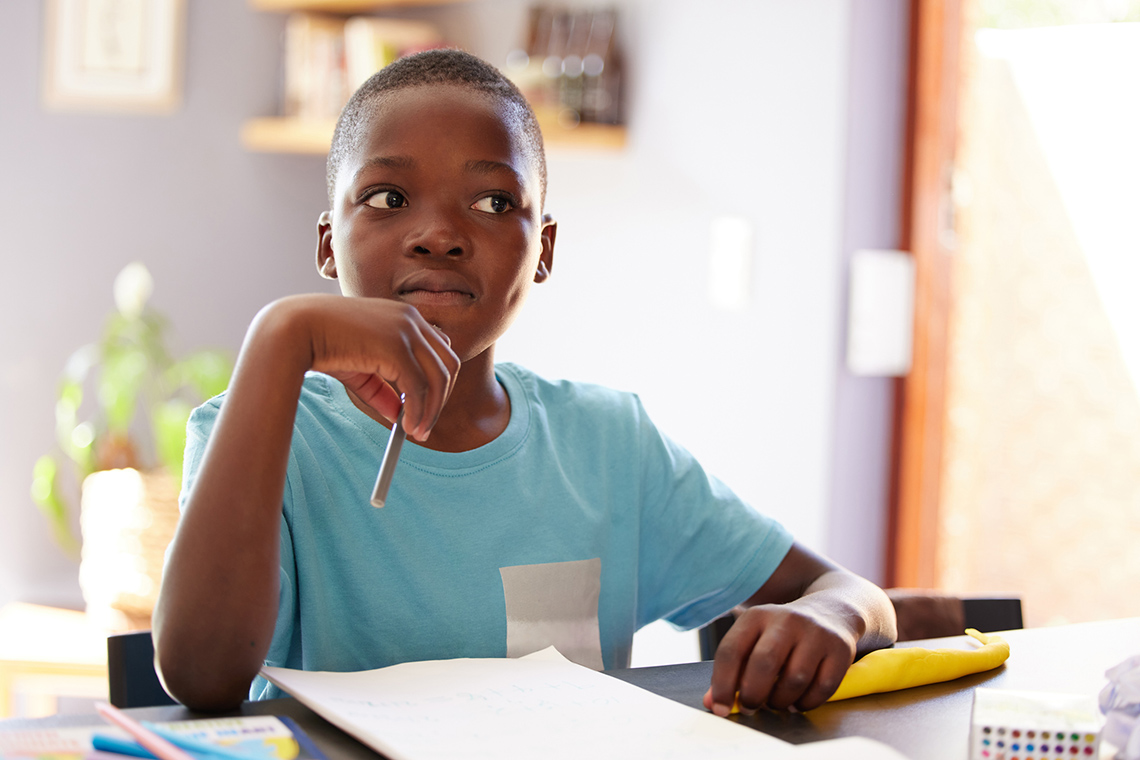
Portfolio
Review your learning
Reflect on the movements you created.
Respond to the following questions. What locomotor movements did you use?
- What non-locomotor movements did you use?
- What pathways did you use?
- What directions did you travel in?
- What went well? What do you want to continue to practise?
Record your responses using a method of your choice. Consider adding your work to your portfolio.
If possible, show or tell someone what you learned about today using the words locomotor, non-locomotor, direction, and pathway.
Reflection
How do you feel about what you have learned in this activity? Which of the next four sentences best matches how you are feeling about your learning? Press the button that is beside this sentence.
I feel…
Now, record your ideas about your feelings using a voice recorder, speech-to-text, or writing tool.